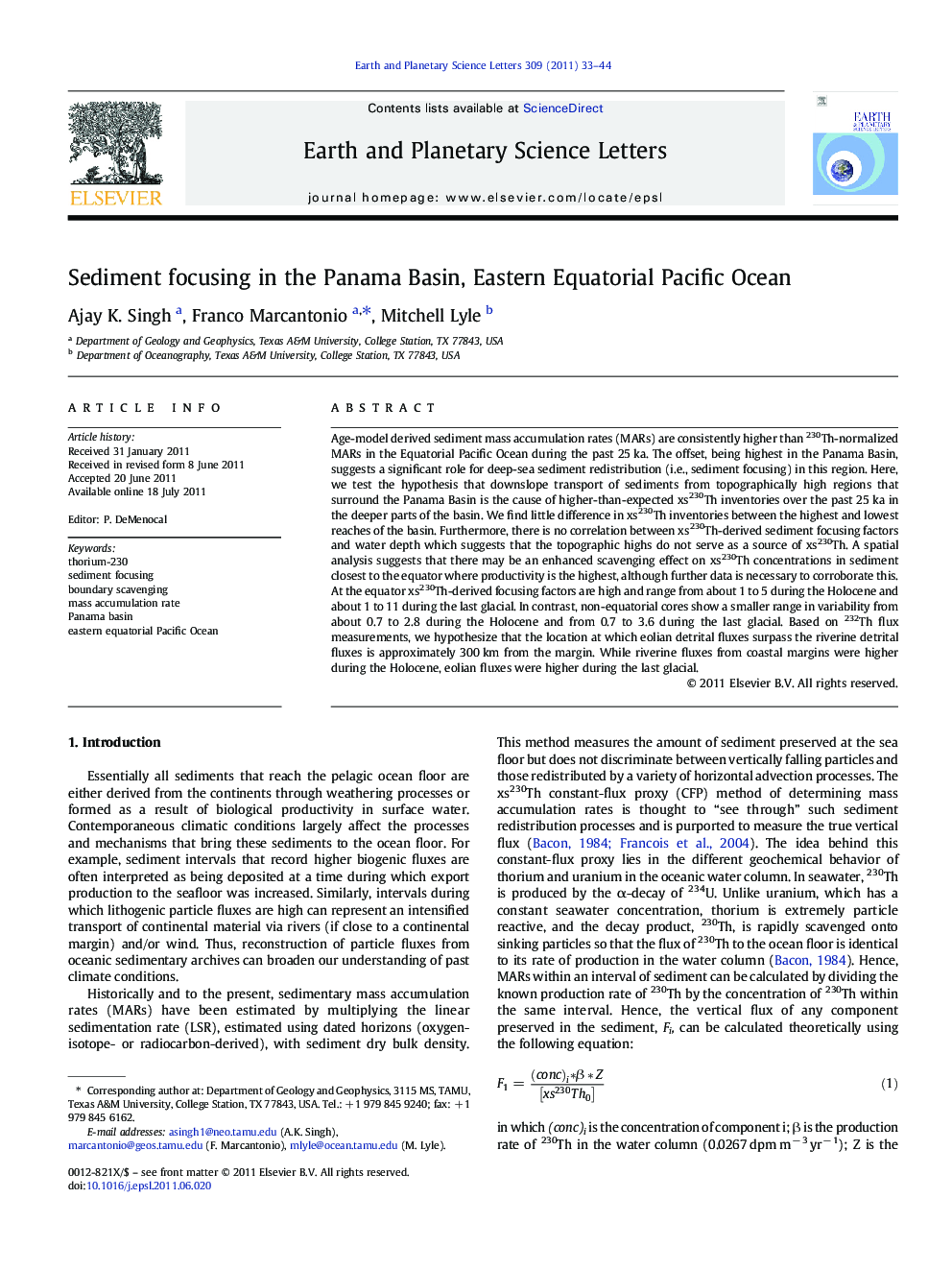| Article ID | Journal | Published Year | Pages | File Type |
|---|---|---|---|---|
| 4677931 | Earth and Planetary Science Letters | 2011 | 12 Pages |
Age-model derived sediment mass accumulation rates (MARs) are consistently higher than 230Th-normalized MARs in the Equatorial Pacific Ocean during the past 25 ka. The offset, being highest in the Panama Basin, suggests a significant role for deep-sea sediment redistribution (i.e., sediment focusing) in this region. Here, we test the hypothesis that downslope transport of sediments from topographically high regions that surround the Panama Basin is the cause of higher-than-expected xs230Th inventories over the past 25 ka in the deeper parts of the basin. We find little difference in xs230Th inventories between the highest and lowest reaches of the basin. Furthermore, there is no correlation between xs230Th-derived sediment focusing factors and water depth which suggests that the topographic highs do not serve as a source of xs230Th. A spatial analysis suggests that there may be an enhanced scavenging effect on xs230Th concentrations in sediment closest to the equator where productivity is the highest, although further data is necessary to corroborate this. At the equator xs230Th-derived focusing factors are high and range from about 1 to 5 during the Holocene and about 1 to 11 during the last glacial. In contrast, non-equatorial cores show a smaller range in variability from about 0.7 to 2.8 during the Holocene and from 0.7 to 3.6 during the last glacial. Based on 232Th flux measurements, we hypothesize that the location at which eolian detrital fluxes surpass the riverine detrital fluxes is approximately 300 km from the margin. While riverine fluxes from coastal margins were higher during the Holocene, eolian fluxes were higher during the last glacial.
► Downslope transport cannot explain high sediment focusing factors in Panama Basin. ► 230Th inventories in sediment may represent particle scavenging effects in basin. ► Detrital fluxes are highest during the Holocene in sediment within 300 km of margin.
